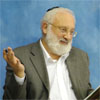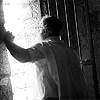 A question I received: You say that Kabbalah uses its own terminology. But when reading Kabbalistic texts, I get confused whether it is speaking about the physical world or the Upper World. So how can you claim that the language of Kabbalah is precise?
A question I received: You say that Kabbalah uses its own terminology. But when reading Kabbalistic texts, I get confused whether it is speaking about the physical world or the Upper World. So how can you claim that the language of Kabbalah is precise?
My Answer: Kabbalah uses names borrowed from our world. However, just as other methods of rendering of the Upper World (The Pentateuch, Mishna, and Talmud), such names allude exclusively to the Upper World, to its forces and properties. So why is it better to study Kabbalah than the Talmud? It’s simply because, when you study Kabbalah, you don’t forget that you’re studying the Upper World – the system that influences you and that you depend on. Hence, you want to draw closer to it, and this desire pulls you toward it.
In addition, it’s best to study with a teacher who explains all this to you and reminds you of it during your studies. And you should study in a group that supports you in this endeavor. As a person studies these texts, precisely his intention to become corrected attracts onto him the Light that Reforms – the Torah. If you read them in any other manner, you will surely get confused and start thinking that it’s speaking about our world.
For instance, take a look at the text of the ARI (The Tree of Life):
The primary HaVaYaH (the 4-letter name of the Creator) from the World of Infinity begets all consequences, which further divide into four parts, down to our world.
1. Every creature contains four bases: fire, water, air, and the dust of the earth. They correspond to the four letters HaVaYaH, and KhuB Tum, and TaNTA (Taamim, Nekudot, Tagin and Otiyot), and ABYA.
2. And these are the four categories in the lower (of our world) Adam: a) the spiritual that’s within him; b) the body; c) the garments; d) the dwelling place. Each of them in turn consists of four: in his spiritual part there’s Nefesh, Ruach, Neshama, and Chaya; in his body there’s Atzamot, Gidin, Basar and Awr (bones, tendons, flesh and skin); in the garments there’s Kutonet, Mikhnasaim, Matznefet, Avnet (shirt, pants, cloak, belt); in the dwelling place there’s Bait, Hatzer, Sade, Midbar (house, yard, field, desert).
3. In the four categories of Adam, there’s one that includes all. And there’s also the middle one between each of these categories, which includes all the adjacent ones.
4. The category which includes all is called the Light of Yechida. It has two parts: the spark of the Creator and the spark of the creature.
5. The middle category between the spiritual in Adam, which is NaRaNCHaY, and his body – is “Reviit Dam” (the fourth part of blood), and Nefesh de-Nefesh (the animate force) clothes in it. It also includes the spiritual part and the body.
6. The middle category between the body and the garments is “Searot” and “Tzipornayim” of Adam (hair and nails).
7. The middle category between the garments and the dwelling place is Oalim (tabernacles) which are made of wool and flax.
Conclusion: Only in the process of studying authentic Kabbalistic texts do you connect with the Upper World and evoke upon yourself the influence of the Upper Light (the Light of the Torah), which can transport you from the perception of this world to the perception of the Upper World. There is no other method that can allow you to achieve such a transformation! Therefore, when the world and you are ready for it, Kabbalah becomes revealed and is offered to you as the method of correction.
Filed under: Spirituality - 1 Comment →
 A question I received in response to my post “It’s All for the Best (But We Can Get to It Faster)“: How can we progress without someone of Moses’ level guiding us forward? We don’t see the Creator’s participation in our daily routine. So who can we turn for answers? The group? Rav? Perhaps if we recognize our egoism and begin to move in the right direction as a group, then the Upper Light will become our guide? Who will guide us through the desert and the disasters that are coming at us so rapidly that we can’t even catch our breath?
A question I received in response to my post “It’s All for the Best (But We Can Get to It Faster)“: How can we progress without someone of Moses’ level guiding us forward? We don’t see the Creator’s participation in our daily routine. So who can we turn for answers? The group? Rav? Perhaps if we recognize our egoism and begin to move in the right direction as a group, then the Upper Light will become our guide? Who will guide us through the desert and the disasters that are coming at us so rapidly that we can’t even catch our breath?







